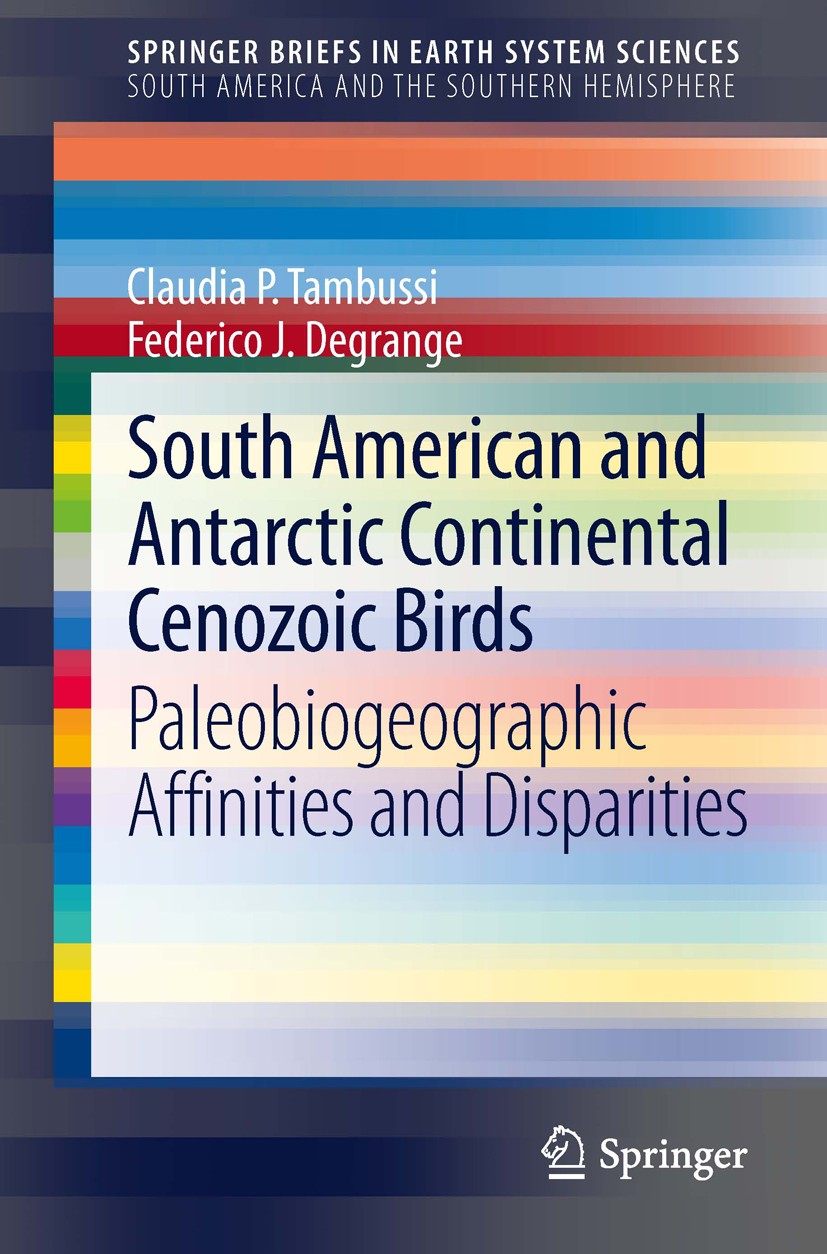| 书目名称 | South American and Antarctic Continental Cenozoic Birds |
| 副标题 | Paleobiogeographic A |
| 编辑 | Claudia P. Tambussi,Federico Degrange |
| 视频video | http://file.papertrans.cn/873/872149/872149.mp4 |
| 概述 | Includes supplementary material: |
| 丛书名称 | SpringerBriefs in Earth System Sciences |
| 图书封面 |  |
| 描述 | Modern birds (Neornithes) are represented by two big lineages, the Palaeognathae (Tinamiformes + Ratitae) and the Neognathae [Galloanserae + Neoaves (Metaves + Coronoaves)]. Both clades sum approximately 10,000 species of which 60% are Passeriformes (the most diverse clade of terrestrial vertebrates). A comparison between the past and the present reveals a complex and hallmarked evolutionary and biogeographic history which would have begun over 65 million years ago. For South America (SA) this includes: (1) the presence of taxa with uncertain affinities and the absence of Passeriformes during the Paleogene; (2) a progressive and accelerated increase of the species starting at the Neogene (Miocene); (3) important extinct lineages (e.g. Phorusrhacidae, Teratornithidae) that migrate to North America after the rising of the Panamá isthmus; (4) groups with major diversification in the Neogene that survives nowadays represented by scarce species endemic of SA (Cariamidae) or that inhabits mainly in the southern hemisphere (Anhingidae); (5) very diverse living groups with scarce (e.g., Passeriformes) or none (e.g., Apodiformes) fossil record in SA, which stem-groups are registered in Euro |
| 出版日期 | Book 2013 |
| 关键词 | Antarctica; Aves; Cenozoic; South America; South American birds; avian biodiversity; paleobiogeography; Sys |
| 版次 | 1 |
| doi | https://doi.org/10.1007/978-94-007-5467-6 |
| isbn_softcover | 978-94-007-5466-9 |
| isbn_ebook | 978-94-007-5467-6Series ISSN 2191-589X Series E-ISSN 2191-5903 |
| issn_series | 2191-589X |
| copyright | The Author(s) 2013 |
 |Archiver|手机版|小黑屋|
派博传思国际
( 京公网安备110108008328)
GMT+8, 2025-12-17 21:29
|Archiver|手机版|小黑屋|
派博传思国际
( 京公网安备110108008328)
GMT+8, 2025-12-17 21:29


